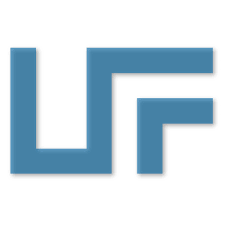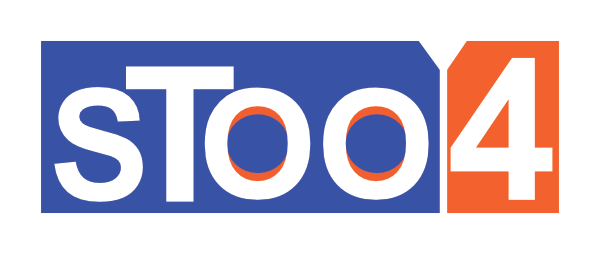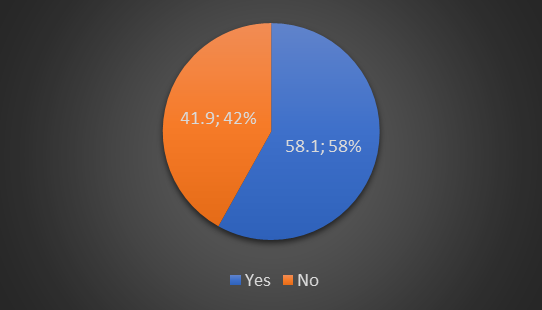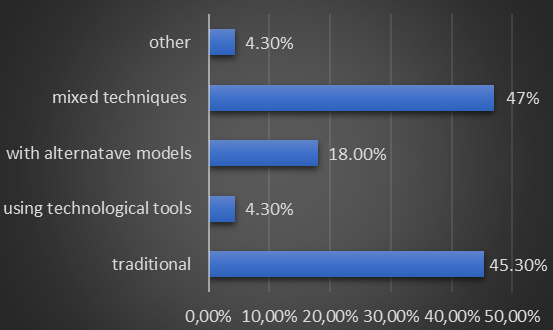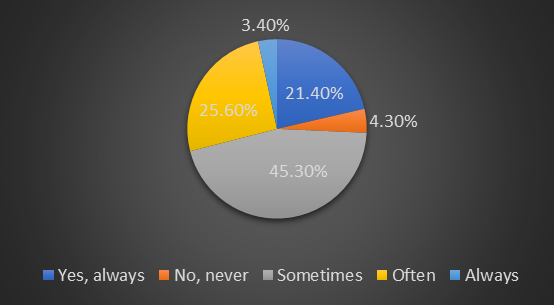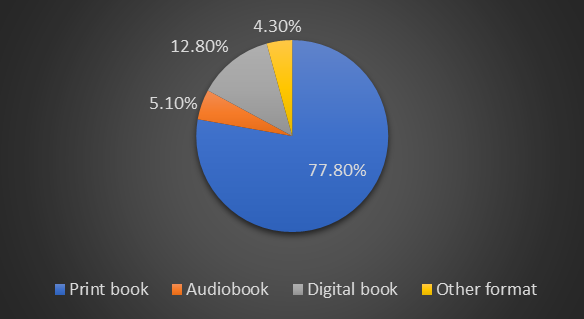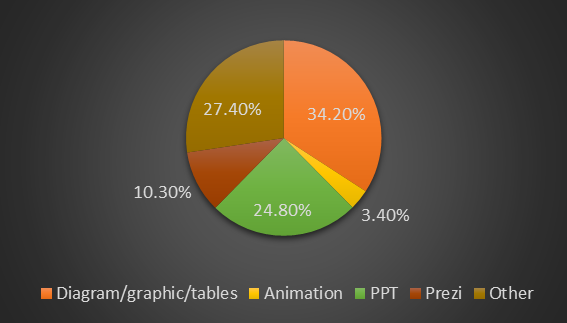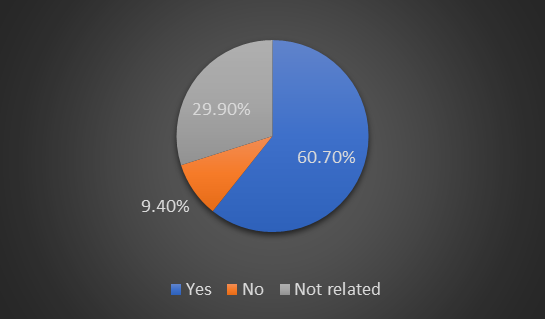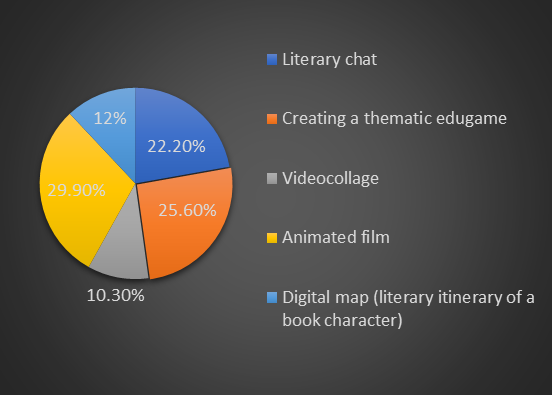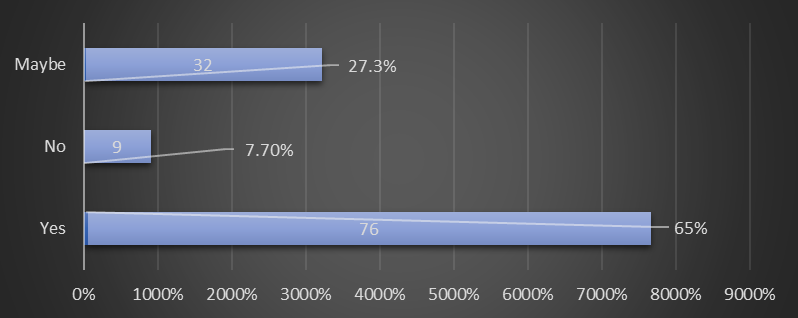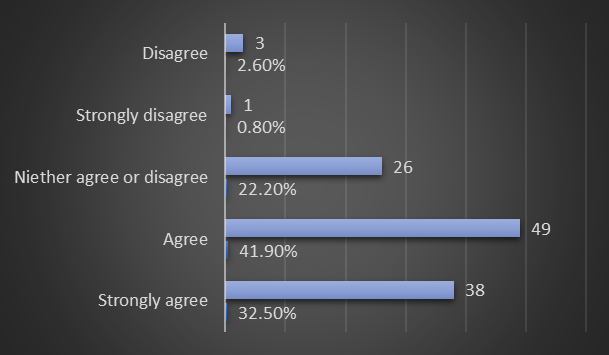Literature learning and digital skills among high school students
|
Teaching (Today for) Tomorrow: Bridging the Gap between the Classroom and Reality 3rd International Scientific and Art Conference |
|
Tonuzi Macaj EdliraUniversity of Tirana, Albania edliralib@yahoo.com |
|
| Section - Education for digital transformation | Paper number: 44 |
Category: Professional paper |
Abstract |
|
This study examines high school students' attitudes toward integrating technology into literature learning, emphasizing their perspectives on digital tools in literary analysis. It explores how technological advancements influence their engagement with artistic works and how students perceive the effectiveness of different digital models in enhancing literary understanding. The research investigates students' willingness to adopt new reading models incorporating digital skills and their role in shaping these approaches. The central hypothesis suggests that providing students with technology-supported models for engaging with literary works – or opportunities for active participation in their implementation – can enhance their reading comprehension and analytical skills. To assess these attitudes, the study employs the quantitative approach, using a thematic survey to measure how literature classes are conducted in high schools. Throughout this approach, it is possible to capture students' preferences and receptiveness to digital tools in literature learning. The paper offers valuable insights into the intersection of literature and digital tools by describing and interpreting survey data obtained by 117 high school students who anonymously responded to the survey. The study case findings highlight students' openness to innovative approaches and their appreciation for literature when learning experiences incorporate technology, ultimately demonstrating the evolving role of digital methods in literary education. |
|
Key words: |
|
digital tools, high school, learning, literature, skills, youth |
Introduction
In today’s rapidly evolving technological landscape, digital advancements’ integration into education presents unprecedented opportunities to enhance student engagement and learning outcomes. This study examines high school students’ attitudes toward incorporating technology into literature learning, exploring how digital tools can enrich their interaction with literary texts. The research focuses on the effectiveness of alternating different instructional models to foster deeper literary analysis and how these approaches can integrate essential digital skills for modern education. It posits that introducing technology-supported frameworks for literary study – alongside opportunities for active student participation in their implementation – can significantly improve reading comprehension and critical thinking skills. To investigate these perspectives, the study employs a concrete approach to examine current literature class structures with students' interaction. By synthesizing situational data from a thematic questionnaire sent to high school students online in various high schools, but mainly the major cities in Albania (Tirana, Durrës), this research provides valuable insights into the intersection of literature education and digital literacy. Ultimately, the findings underscore both students’ and educators’ readiness to embrace innovative methods, highlighting their enthusiasm and openness for technology-enhanced literature learning and the potential for qualitative improvements of students with literary engagement.
Literature review
Technology integration into education has been a subject of extensive research and debate, with numerous studies highlighting its potential to enhance student engagement and learning outcomes. One significant area of focus has been the use of digital tools in the teaching of literature. According to McKnight (McKnight et al., 2016), technology can transform traditional classrooms by providing interactive and engaging platforms for students to explore literary texts. This aligns with the findings of Beers (2003), who emphasized that digital resources can facilitate a deeper understanding of complex literary themes by offering diverse perspectives and interactive elements. Teachers can improve readability at the secondary (6-12) level by choosing practical strategies. Several studies have explored specific technological applications in literature education. For instance, O'Brien and Scharber (2008) discuss the benefits of digital storytelling, which allows students to create multimedia presentations of their interpretations of literary works. This approach enhances their comprehension but also develops their digital literacy skills. Similarly, Herrington, Parker, and Boase-Jelinek (2014) highlight the role of online forums and collaborative platforms in fostering discussions and critical thinking among students, enabling them to engage with literature in a more dynamic and participatory manner. The importance of digital literacy in contemporary education is underscored by scholars such as Gilster (1997), who define it as the ability to understand and use information in multiple formats from various sources when presented via computers.
Digital literacy involves analysing, interpreting, and creating content using digital tools in literature education. This is supported by Leu et al. (2004), who argue that digital literacy skills are essential for students to navigate and make sense of the vast information available online. Research has also examined the impact of new pedagogical models on student engagement and learning. For example, Mishra and Koehler's (2006) Technological Pedagogical Content Knowledge (TPACK) framework emphasizes the need for teachers to integrate technology effectively into their teaching practices to enhance student learning. This framework has been widely adopted in studies exploring technology integration in literature education, such as those by Young and Bush (2004), who found that using technology in literature classes can lead to student motivation and engagement.
Furthermore, studies have shown that students' active participation in creating and using digital content can significantly enhance their learning experience. According to Jenkins et al. (2009), participatory culture, where students are encouraged to contribute to and collaborate on digital projects, can lead to more meaningful and engaged learning. This is echoed by Kress (2003), who highlights the importance of multimodal literacy, where students learn to interpret and create texts using various modes of communication, including digital media. All these ideas are in the way to promote a better affiliation for young students with literature classes surpassing traditional reading. Critics contend that conventional reading instruction, which frequently emphasizes isolated skills, may fail to promote a comprehensive understanding of texts and might not effectively meet the varied needs of students (Jones, 2021). The existing literature suggests the use of technology in literature classes. It can enhance student engagement, comprehension, and digital literacy skills. Students are less likely to develop a passion for reading or recognize its relevance if the content is not meaningful and engaging (Edmunds & Bauserman, 2006). Adopting new pedagogical models and encouraging active student participation can create more dynamic and effective learning environments. This study builds on these findings by exploring how high school students in two major cities in Albania can use technology to engage with literature more deeply and how new models can improve their reading and learning competencies.
This theoretical and practical background at the international level is essential to consider, as it also impacts the educational strategies in Albania. Documents such as the Education Strategy 2021-2026 (Strategjia, 2021-2026: 12), the Law on Education (Law 2012, 2015), and specific guidelines emphasize the significance of digital competence. However, empirical studies on the implementation of this competence remain limited. Even in published cases, aspects such as digital infrastructure and the effectiveness of interventions – if any have been undertaken – still lack measurable assessments (Macaj & Shehri, 2022: 29). For this reason, the present study aims to assess the extent and manner in which high school students engage with literature learning concerning to the opportunities provided by technology. Consequently, students should be guided through concrete models to develop this competence effectively. The data obtained from the questionnaire offers an overview of the current situation and indicates students' tendencies regarding how they perceive and approach literature and the study of literary works.
Methodology
This paper employs a quantitative research methodology, using a structured questionnaire as the primary data collection instrument. The concrete objective is to examine high school students’ attitudes toward integrating digital tools in literature education and to assess whether these tools enhance their ability to analyse artistic works. A questionnaire was designed to evaluate students’ digital competencies, engagement with literature, and openness to technology-supported learning models. The questionnaire includes a combination of closed-ended, multiple-choice, and Likert-scale questions to measure students’ preferences, perceptions, and experiences regarding the use of technology in literature classes. It was distributed electronically via Google Forms to high school students across various schools in Tirana and other cities in Albania, ensuring broad participation and a diverse sample. The survey maintains respondent anonymity and is structured to capture data on students’ digital literacy, reading habits, and attitudes toward interactive learning methods. This method was chosen because it is convenient for problem statement and searching interest closely related to teaching and learning, specifically literature, as one of the most important subjects in the high school curricula of Albania.
Traditional literature teaching in Albania's high schools often relies on conventional teaching methods, such as textbook-based instruction, teacher-led analysis, and memorization of literary concepts. These approaches can limit students' engagement, critical thinking, and ability to interact with literary texts dynamically. The lack of digital tools in literature instruction may limit students' ability to engage with texts independently, enhance their analytical skills, and establish meaningful connections with literature. This study seeks to test the following hypotheses: The integration of digital tools enhances students' comprehension and engagement with literary works by offering interactive and multimedia-based approaches to reading and analysis; Students who use technology in literature education demonstrate improved analytical skills compared to those who rely solely on traditional teaching methods; High school students show a positive attitude toward incorporating technology in literature learning, indicating a willingness to adopt new digital reading models.
Although this research examines the structure of literature classes and technology integration, it does not employ a qualitative research approach. The study does not include direct program analysis, in-depth classroom observations, or qualitative interviews with educators. Instead, all findings are based on students' self-reported experiences and perceptions, as gathered through the questionnaire. High school students were the sole assessors of literature education methods, providing insights into their preferences and the effectiveness of digital tools in literary learning. As they are the main actors in perceiving knowledge, the interest is on explaining and interpreting their direct answers. The data collected will contribute to understanding how digital methodologies can support literature education and whether students perceive technology as an effective tool for analysing artistic works.
Data analysis
A survey was conducted among high school students using a structured questionnaire. The survey comprised ten research questions designed to assess the impact of technology and its associated facilities on knowledge acquisition, focused on literature as a school subject. Four optional questions were included, inquiring about the respondent’s city, school, class, and gender. Analysis of these variables suggests that geographical location, institutional affiliation, and year of study play a significant role in shaping educational distribution and academic performance at the national level. The survey sample included students from high schools in Tirana, Albania’s most developed city, and Durrës, the country's second most developed city, facilitating a comparative analysis between students from these urban centres. There were also submitted answers from small towns such as Klos, Mallakastër, and Kukës. However, their representation was so limited that it did not help to build a comparative analysis between urban areas – such as the two major cities – and less developed areas like these small towns. Nevertheless, their responses are still considered in the overall assessment. For research purposes, two large cities are sufficient.
Of the 117 students who participated in the survey, 114 provided information about their city of residence, while 115 specified the school they attended. The gender distribution of respondents indicates that 91 students (79.8%) were female, while 23 students (20.2%) were male. Additionally, 25 respondents were from high schools in Durrës, whereas 86 were from institutions in Tirana, indicating that the sample was drawn from Tirana’s high schools. The surveyed students were enrolled across the three years of general secondary education.
The collected data offer insights into the research questions, particularly concerning the availability of technological infrastructure in schools. According to the responses, 41.9% (49 students) reported that their schools do not have an active technological infrastructure to support literature classes, whereas 58.1% (68 students) stated that their schools use technological tools to facilitate literature instruction, as illustrated in Figure 1.
Figure 1 Activated tech infrastructure for literature classes
The second research question discovers the instructional methods employed in literature classes across the surveyed schools. According to the collected data, 53 respondents (45.3%) reported that literature instruction in their schools follows a traditional approach, adhering strictly to the standard curriculum guidelines. A nearly equal proportion – 55 students (47%) – indicated that their literature classes incorporate a combination of instructional methods and techniques. The most effective pedagogical approach seems to be a balanced combination of traditional and technological models, as indicated by 18 students (15.4%), who reported that literature instruction in their schools incorporates both approaches alternately. However, only 5 respondents (4.3%) indicated that literature classes in their schools rely exclusively on technological resources, while an equal number reported the use of other, unspecified methods. The response distribution for this question is presented in Figure 2.
Figure 2 How the literature classes are conducted
The questionnaire aimed to gather students’ perspectives on whether technology facilitates their engagement with reading. The responses indicate that 53 students (45.3%) believe technology can sometimes fulfil this role. Additionally, 25 respondents (25.6%) perceive technology as frequently enhancing their reading engagement. A further 21.4% (25 students) reported that technology consistently supports their reading engagement, while 4 students affirmed this view without explicitly selecting the “always” frequency. Conversely, only 5 respondents (4.3%) rejected the notion that technology contributes to their engagement with reading. The distribution of these responses is illustrated in Figure 3.
Figure 3 Technology impact
Students were asked about their preferred book format for reading, including print books, audiobooks, digital books, or other formats. The responses indicate a strong preference for traditional print books, with 91 students (77.8%) favouring this format. Additionally, 15 students (12.8%) expressed a preference for digital books, while 6 students (5.1%) indicated a preference for audiobooks. A smaller proportion, 5 students (4.3%), selected other unspecified formats. The distribution of these preferences is depicted in Figure 4.
Figure 4 Preferred formats of books
To assess students' engagement with literature class projects, they were asked whether they have independently conducted research related to their literature studies using technological resources. This question aimed to determine the extent of their active participation in literary research and projects. The responses indicate that 39 students (33.3%) occasionally utilize technology for literary research and reading, while a slightly higher proportion – 44 students (35.9%) – frequently make use of technological resources in literature classes. Additionally, 19 students (16.2%) reported consistently engaging with technology for this purpose.
Conversely, 9 students (7.7%) stated that they have never conducted literary research using technology, while 8 students (6.8%) reported rarely doing so. Overall, the majority of respondents acknowledged having used technological resources for literature classes. The distribution of responses is illustrated in Figure 5.
Figure 5 The frequency of independent research
Given that students demonstrate both the ability and preference for utilizing technological tools and resources to enhance their literature classes – and acknowledge the role of these methods in improving reading quality – the survey aimed to identify the specific techniques students employ for research projects or literature lessons in their schools.
The findings indicate that 40 students (34.2%) reported using diagrams, charts, or tables created with various computer programs. Additionally, 29 students (24.8%) stated that they incorporate PowerPoint presentations into their literature classes, while 12 students (10.3%) have utilized Prezi as an explanatory tool. Moreover, 32 students (27.4%) acknowledged employing diverse technological techniques or applications in their literature studies. A small proportion, 4 students (3.4%), reported engaging in the creation of animated content. The distribution of these responses is illustrated in Figure 6.
Figure 6 Used techniques for literature classes
Technology has become an integral aspect of the younger generation’s daily life, while traditional schooling continues to uphold its established principles. The survey sought to explore how students navigate the transition toward a learning process increasingly influenced by technology, which introduces new approaches to reading and interpreting literary works.
Although the majority acknowledge their connection with technology and actively utilize its tools to enhance their learning experience, a key question in the survey aimed to assess whether this technological engagement genuinely improves reading quality, comprehension skills, communication, critical thinking, and other competencies. The data show that 71 respondents (60.7%) believe technology has a positive impact on the reading process. Meanwhile, 35 students (29.9%) do not perceive a connection between reading and technological tools, whereas only 11 respondents (9.4%) believe that the technology affects negatively on reading. The results are shown in Figure 7.
Figure 7 Impact of technology on the quality of Reading
Given the strong connection between students and the digital environment, the survey aimed to identify which interactive digital formats – such as a literary chat, an online educational game, a video collage, an animated film, or a digital map – would be most suitable for engaging with artistic works in alternative ways. The findings indicate that 35 students (29.9%) considered an animated film the most appropriate option. Similarly, 30 respondents (25.6%) preferred an online interactive game, while 26 students (22.2%) selected a literary chat as their preferred method of engagement. Additionally, 12 students (10.3%) preferred a video collage, whereas another 14 (12%) favoured creating a digital map or a literary itinerary for a character. The distribution of these preferences is illustrated in Figure 8.
Figure 8 Favourite practices to choose for a literary work-study
To further assess whether students are open to engaging with new approaches to literature, the survey explored their willingness to continue interacting with alternative models. The results indicate that 76 students (65%) responded favourably to this idea. In contrast, 9 students (7.7%) disagreed, while 32 students (27.3%) stated that such an approach would be beneficial in certain circumstances. The distribution of these responses is illustrated in Figure 9.
Figure 9 interaction between students and technology
One of the main reasons for integrating technology and the digital environment into students' individual or group assignments and research projects – focused on the reading, analysis, and interpretation of literary works – is the creation of effective models. These models provide new alternatives for studying literary works while fostering the development of students' learning skills and competencies, particularly in digital literacy. Regarding this approach, 49 students (41.9%) agreed that effective models contribute to the improvement of their skills, while 38 students (32.5%) strongly agreed. A further 26 students (22.2%) expressed uncertainty on this matter. Only 4 students (3.4%) disagreed, respectively 3 (2.6%) and only 1 of them (0.8%) strongly disagreed with this approach, as illustrated in Figure 10.
Figure 10 impact of samples in improving skills
Results and discussion
The respondents showed significant results related to literature classes and high school students' engagement. Firstly, there is a notable variation at the level of technological advancement across schools, even inside larger cities. Disparities exist in the equipment of schools with active technological infrastructure, not to mention in rural areas. Secondly, the pedagogical methods employed in teaching literature vary greatly among institutions. The majority of responses indicated that literature classes are primarily taught traditionally. However, schools that have attempted to integrate a blend of traditional and technological methods have shown better results at the national level. Today, students seem to be increasingly connected with technology. Among the 117 respondents to the questionnaire, 112 students (approximately 95.7%) agree that technology aids and facilitates their engagement with reading. Regarding preferences for book formats, it is clear that while the majority still favour traditional print books, there is a noticeable shift toward other formats enabled by technology. Traditional print books account for 77.8% of preferences, while alternative formats represent 22.2%. Although this shift reflects an increasing openness to digital formats, traditional print remains dominant. Despite the widespread belief that technology can enhance engagement with reading, students continue to prefer traditional methods of interacting with books. Regarding the use of technological tools in literature classes, over 90% of high school students report utilizing technology for projects or individual research related to literature. This usage spans various frequencies – rarely, occasionally, frequently, and always – indicating a substantial level of engagement with technological resources in literature education.
When it comes to the most commonly used techniques and tools, the data suggest that students are developing new skills through their familiarity with technology. Diagrams, project presentations, and even animated creations have proven to be appealing and useful alternatives, especially in the context of literary topics. These practices contribute to the perception of literature as a subject that can be explored and understood in multiple ways, offering diverse avenues for interpretation and creative expression. More than 60% of students believe that technology has a notable impact on reading. The similar distribution of preferences for different models of engaging with literary works indicates that students are open to working in multiple directions simultaneously. This flexibility enables them to approach a literary piece from various perspectives, leading to a deeper and more nuanced understanding. The overwhelming majority of respondents favor continued interaction with the tools and methods technology offers for studying literary works. The responses regarding students' views on whether well-designed models supported by technology improve various skills – including digital literacy – indicate strong support for this approach. Specifically, based on the answers to the last question, 74.4% of students (strongly agree 32.5% and agree 41.9%) view the integration of technology as optimal for enhancing their learning experience, and they think that under the guidance of good technology-assisted models, students benefit and improve their digital skills. In contrast, 2.6% and 0.9% of respondents disagree and strongly disagree, respectively, while 22.2% remain unsure, with their views likely to change over time.
Conclusion
This study employed a quantitative approach to provide a concrete and comprehensive understanding of how technology can be integrated into high school literature education to enhance student engagement and learning outcomes. The survey was specifically dedicated to exploring young students' affinity for technology in literature classes, and data gathered showed valuable insights into the potential benefits and challenges associated with adopting innovative pedagogical models in literature instruction. The survey’s findings reveal a significant disparity in technological advancement across schools, with rural institutions trailing behind their urban counterparts. While traditional methods of literature instruction remain predominant, schools that incorporate various tools and teaching methods demonstrate improved educational outcomes. Although there is a clear preference for printed books among students, many recognize the potential of technology to enhance their engagement with reading. The widespread use of technological tools in literature classes indicates considerable integration of digital resources into the learning process. The data also suggest that students are increasingly attracted to new, technology-supported methods – such as project presentations and interactive diagrams – that facilitate a multidimensional approach to understanding literature. The consensus among students is that technology enhances their reading experience and also aids in the development of essential skills. This growing trend toward integrating technology into literature education reflects a broader shift toward modern, technology-enhanced learning models, with many students expressing a positive outlook on these innovative approaches.
References
Beers, Kylene. (2003). When Kids Can’t Read: What Teachers Can Do. A Guide for Teachers 6-12. London: Heinemann.
Edmunds, K. M., & Bauserman, K. L. (2006). “What teachers can learn about reading motivation through conversations with children.” The Reading Teacher, 59(5), 414-424.
Gilster, Paul. (1997), Digital Literacy. New York: Wiley Computer Pub.
Herrington, Jan, Parker, Jenny, and Boase-Jelinek, Daniel. (2014). “Connected authentic learning: Reflection and intentional learning” Australian Journal of Education 58(1):23-35
Jenkins, Henry, et al. (2009). Confronting the Challenges of Participatory Culture: Media Education for the 21st Century. Cambridge: The MIT Press.
Jones, L. (2021). “Challenges in Traditional Reading Instruction: A Critical Review”. Journal of Educational Research, 58(4), 312-329.
Kress, Gunther. (2003). Literacy in the New Media Age. London: Routledge.
Leu, D. J., Jr., Kinzer, C. K., Coiro, J., Cammack, D. (2004). Toward a theory of new literacies emerging from the Internet and other ICT. In R.B. Ruddell & N. Unrau (Eds.), Theoretical Models and Processes of Reading, Fifth Edition (1568-1611). Newark, DE: International Reading Association.
Ligji Nr. 56/2015. (2015, May 28). Për disa ndryshime në sistemin arsimor parauniversitar në Republikën e Shqipërisë. Fletorja Zyrtare e Ligjeve të RSH.
Ligji Nr. 69/2012. (2012). Për sistemin arsimor parauniversitar në Republikën e Shqipërisë. Fletorja Zyrtare e Ligjeve të RSH. (Amended by Ligji Nr. 56/2015, May 28, 2015).
Macaj, E., & Shehri, D. (2022). Letërsi, teknologji, edukim (E. Çali, Ed.). Mediaprint.
McKnight, Katherine; O'Malley, Kimberly; Ruzic, Roxanne; Horsley, Maria Kelly; Franey, John J.; Bassett, Katherine. (2016). “Teaching in a Digital Age: How Educators Use Technology to Improve Student Learning”. Journal of Research on Technology in Education, 48 (3): 194-211 2016
Mishra, P., & Koehler, M. J. (2006). “Technological Pedagogical Content Knowledge: A Framework for Teacher Knowledge.” Teachers College Record, 108(6), 1017-1054. https://doi.org/10.1111/j.1467-9620.2006.00684.x
O'Brien, D. & Scharber, C. (2008). “Digital Literacies Go to School: Potholes and Possibilities.” Journal of Adolescent & Adult Literacy, 52(1), 66-68.
Young, C.A. & Bush, J. (2004). “Teaching the English Language Arts With Technology: A Critical Approach and Pedagogical Framework.” Contemporary Issues in Technology and Teacher Education, 4(1), 1-22. Waynesville, NC USA: Society for Information Technology & Teacher Education. https://www.learntechlib.org/primary/p/21903/.
The questionnaire used for the study purpose:
This questionnaire aims to evaluate the digital competence and engagement of high school students concerning the practical use of technology to improve the quality of literature education. The questionnaire ensures and respects the anonymity of each respondent. We thank you for your participation!
City: ___
School: ___
Class: ___
Gender: M/F
1. Does your school have technological infrastructure used during literature lessons?
a) Yes
b) No
2. How is literature taught in your school?
a) Traditionally
b) Using technological tools
c) With alternative models
d) With a mix of methods and techniques
e) Other
3. Do you think technology helps students engage more with reading?
a) Yes, always
b) No, never
c) Sometimes
d) Often
e) Always
4. Which formats do you prefer for reading literary works?
a) Printed book
b) Audiobook
c) Digital book
d) Other format
5. Have you successfully conducted independent research on a literature topic using technology?
a) Always
b) Never
c) Sometimes
d) Often
e) Rarely
6. Which techniques do you use for literature project topics?
a) Diagrams/graphs/tables
b) Animations
c) PowerPoint (PPT)
d) Prezi
e) Other
7. Do you think that using technology improves the quality of reading?
a) Yes
b) No
c) It’s unrelated
8. In your opinion, which of the following suggestions would be most effective for you to use (or approach differently) when working with a literary work?
a) Literary chat
b) Creating an educational video game
c) Video collage
d) An animated film
e) A digital map (literary itinerary)
f) Book trailer
g) Other, specify
9. Would you like to engage with new models to approach literature differently?
a) Yes
b) No
c) Maybe
10. Do you think that under the guidance of good technology-assisted models, students benefit and improve their digital skills?
a) I strongly agree
b) I agree
c) Maybe
d) I disagree
e) I strongly disagree
